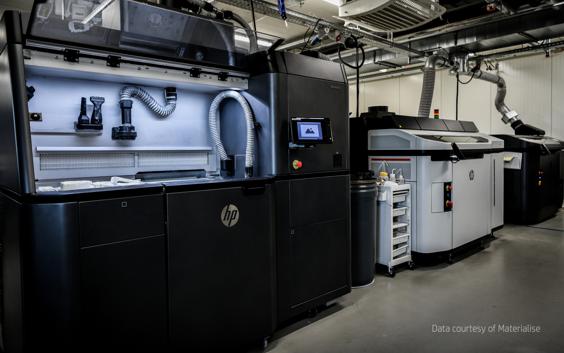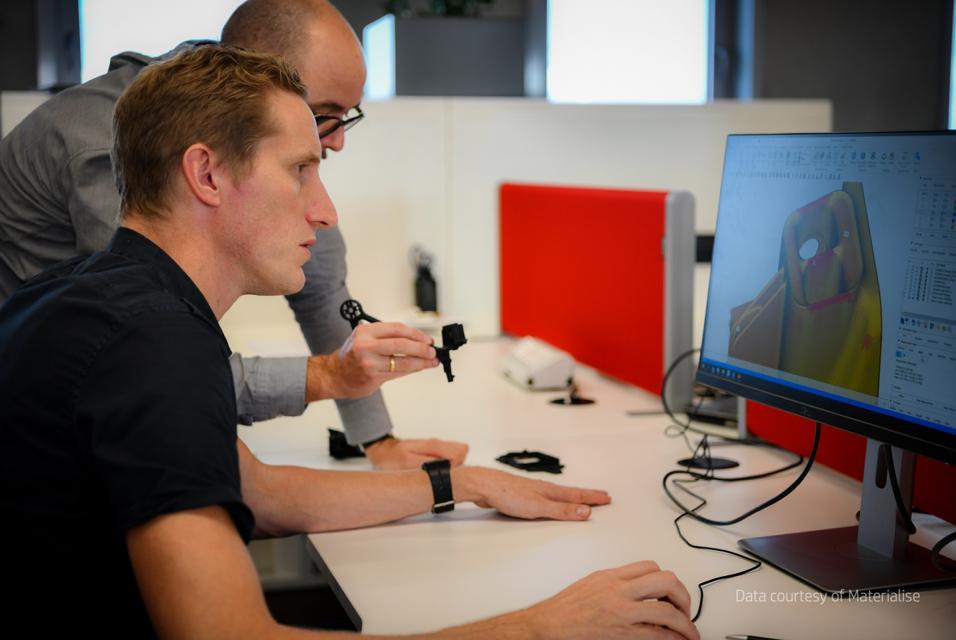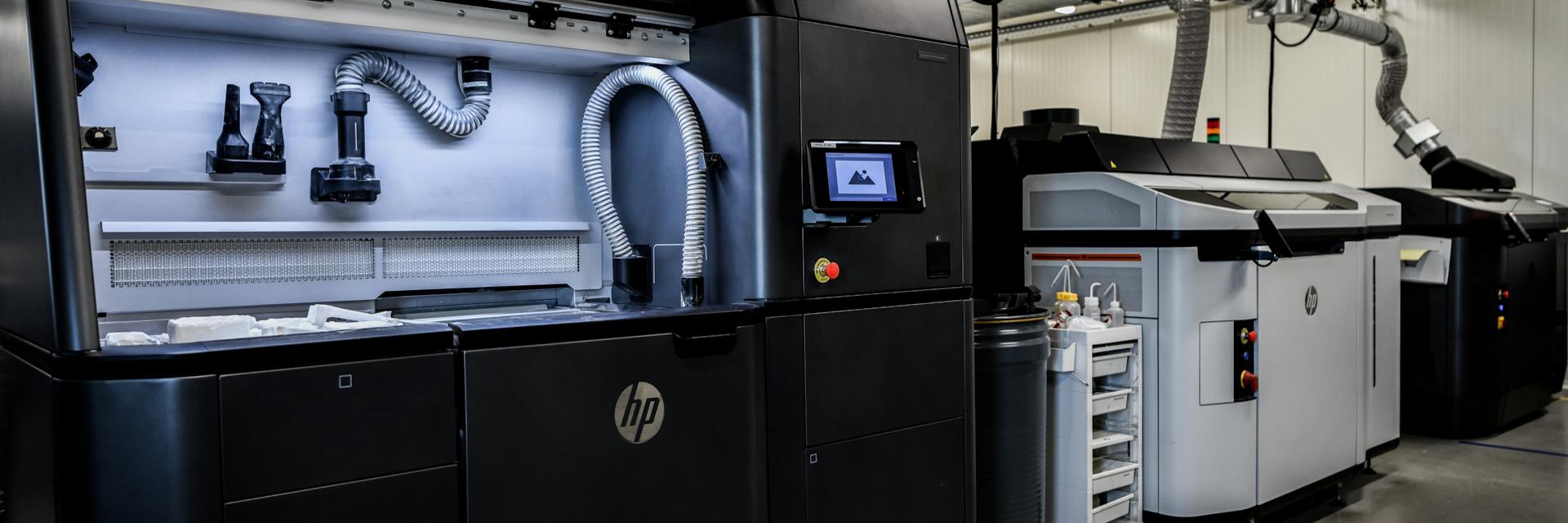EXPERT INSIGHT
Materialise and HP Strengthen User Control over AM Processes

As additive manufacturing matures, AM users desire even greater control over operations to further streamline processes and improve efficiency. We at Materialise have experienced the benefits of integrating software into hardware firsthand over our 30 years in the industry, providing production engineers with powerful information they can use to gain that control and improve facility planning. Along with productivity improvements, software also has the capability to protect intellectual property (IP) — a major interest of those contemplating the addition of AM to their business.
Kristof Sehmke, Materialise Corporate PR Manager, spoke with Rebecca Campbell, Director of 3D Business Models and Programs at HP Inc., to discuss machine communication, digital rights management, and the HP Digital Manufacturing Network (DMN).
Building a cohesive AM environment
When it comes to creating clear, organized, and efficient AM operations, the integration of software and hardware is crucial. Take Materialise’s HP Build Processor 2.0 for example, which establishes a seamless connection from software to any machine in the HP Multi Jet Fusion family in order to greatly improve productivity. It effortlessly facilitates two-way communication by connecting projects from design to printers while providing real-time data back to the user.


A major way that this bilateral communication provides users with more control is by sharing essential data, such as the Build Time Estimator. This feature displays how long a machine will take so that users can learn from that data to make decisions sooner and improve production scheduling. Additionally, back-and-forth machine communication also promotes the traceability of printed, or soon-to-be-printed, parts. Live data clearly indicates machine status, while log data is saved over time and pinpoints the exact procedures each part has been through, which can then be imported into Streamics for further management. This software has the capability to capture that information and generate corresponding reports, allowing users to learn from these past trends to improve future production processes.
Software does indeed automate many processes, allowing operators to focus on more worthwhile tasks, but it also provides users with extremely valuable data to further improve workflows. The bidirectional communication between printers and software ensures that projects run smoothly all while providing real-time data to users and enabling them to enhance traceability and the machine organization.
Securing projects from end-to-end
In addition to these efficiency enhancements, two-way communication also improves an issue on many people’s minds — additive manufacturing security.
In a world where technology is king, cybersecurity has been a growing concern for those that are unsure about converting to digital manufacturing. In order to protect intellectual property, it’s essential to control who has access to which files and what they can do with them at each and every step of the additive manufacturing process.
This is where digital rights management comes into play. If a design gets into the hands of the wrong person, confidentiality is at stake. According to Rebecca, "When we think about digital rights management, it helps to keep the integrity of data and give confidence to customers that all their IP and all that thought that they put into a design will be protected." Materialise and HP both recognize that improving 3D printing security is crucial and are taking steps towards implementing additional security measures.
Data protection in action
Together, they pursued an opportunity to step up security in a project with Superfeet, developers of 3D-printed insoles.


To move forward in the pursuit of a seamless, secure AM workflow, Materialise and HP worked with Superfeet on a pilot project to enhance the security of AM files. During this collaboration, Superfeet protected files by implementing specifications on how parts can be printed.
“Digital rights management really ensures that only the right people can print that part at the right time with the right quantity and the right technology. This example with Superfeet is the right path, and we’re going to see the conversation of security grow. Materialise and HP are on the same page to really bring confidence to our customers.”
— Rebecca Campbell, Director of 3D Business Models and Programs at HP Inc.
The outcome of this project was an encouraging step, and both HP and Materialise are dedicated to continuing on the path towards achieving more security measures in the additive manufacturing world.
As two companies with similar goals to improve the additive manufacturing industry, HP and Materialise are benefitting from the Digital Manufacturing Network (DMN) of HP to make strides together towards great improvements. Materialise meets the high standards required to serve the most demanding industries and uses certified production and quality processes. Additionally, Materialise was among the very first companies committed to using MJF technology, so it was a natural step to become a proud member of the DMN.
Projects such as Materialise’s HP Build Processor and the case with Superfeet are only a couple examples of how devoted partners can work together and forge ahead to boost AM in the right direction.
Share on:
You might also like
Never miss a story like this. Get curated content delivered straight to your inbox.
